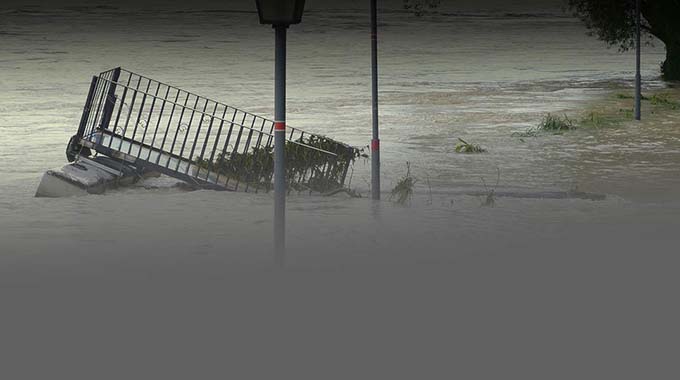Expert warns of flash flooding

Sifelani Tsiko Agriculture and Environment Editor
Zimbabwe must have contingency plans for flash floods that could possibly hit known-vulnerable areas after climate experts predicted above normal rainfall over large parts of the country.
Climate experts said Zimbabweans must be conditioned to prepare for flash floods, violent storms, tropical cyclones and floods in low-lying areas as climate change brings ever more frequent bouts of extreme weather.
Prof Desmond Manatsa, a climate science expert at Bindura University of Science Education, said that Zimbabweans needed to reconsider the risks given that wetter conditions are expected this season.
“I do concur with the national forecast to some extent,” he said.
“The Pacific Ocean had a La Nina and the Indian Ocean Dipole is negative. Both conducive for a normal to above normal rainfall amounts. The methodology which we use for our national forecast is only able to predict total amounts, but has no capacity to incorporate variations within a season.”
Given those risks, Prof Manatsa said rainfall extremes have become more frequent within the season where floods and drought spells occur back-to-back irrespective of the outcome of the season.
“Since observations show that the intensity and frequency of high intra-seasonal rainfall events outweigh that of drought spells in an above normal rainfall and the reverse occurs in a drought year, we can safely say that this season could be characterised by high rainfall episodes within the season especially in the second half,” he said.
“The other aspect that can be derived from the forecast is that it may have an extended end of season. In light of this, I am sure agricultural extension officers should be in a position to offer the appropriate advice to local farmers depending on location. In urban areas, drainage systems should be attended to so that accumulation of rainwater which may cause flash floods is avoided.”
With heavy rains predicted, climate experts warn that homes, roads and other infrastructure could be flooded quickly, with damage to some buildings from floodwater, lightning strikes, hail or strong winds unless drains are cleared out and other precautions taken.
Flooded rivers could cause danger to life while sudden flooding could lead to difficult driving conditions, clogging of water drains and chances that some communities become cut off by flooded roads and rivers.
“Our climate adaptation policies should not be kept on our shelves, but must be implemented to help the most vulnerable to better cope with extreme conditions such as droughts and floods,” said a Government climate expert.
“This latest flood or heavy rain warning should serve as an opportunity for Zimbabwe and other governments in the region to take heed of the warnings coming from our weather experts to prepare for the worst.”
Zimbabwe has increasingly seen more severe floods in recent decades.
Tropical cyclone Idai, the worst in more than 50 years to reach Zimbabwe, brought heavy rainfall and strong winds to Malawi, Mozambique and Zimbabwe between March 5 and 19 in 2019, causing severe flooding which led to loss of lives, destruction of infrastructure, disruption of livelihoods and destruction of crops.
It is estimated that close to 780 000ha of crops in the three countries were destroyed by the cyclone, with the majority of this damage being in Mozambique.
Dams and wells were also damaged, and livestock were washed away. SADC launched a US$323 million appeal to support the disaster response and recovery efforts related to the impact of Tropical Cyclone Idai.










Comments